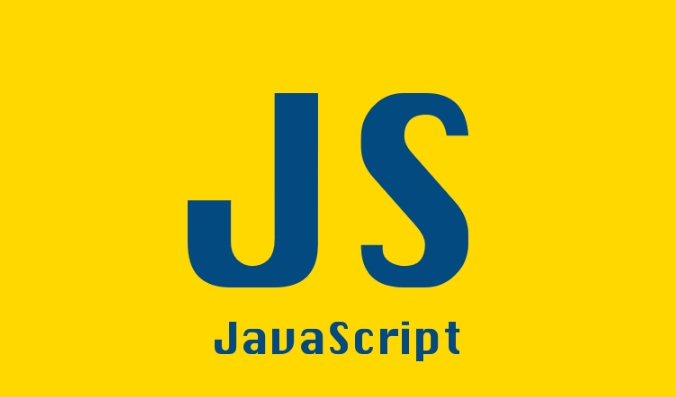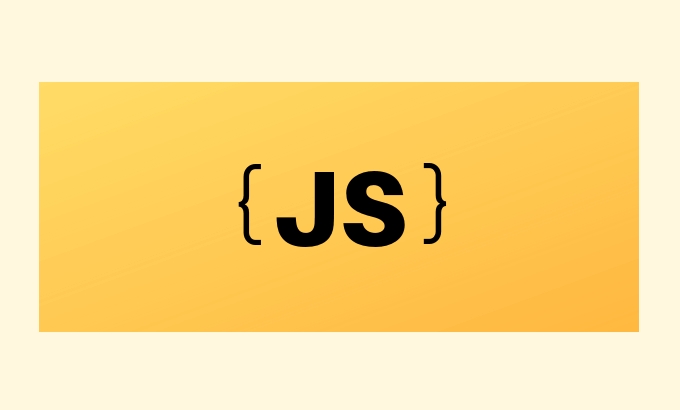The key to dealing with JavaScript time zone issues is to choose the right method. 1. When using native Date objects, it is recommended to store and transfer in UTC time and convert it to the user's local time zone when presenting; 2. For complex time zone operations, moment-timezone can be used, which supports IANA time zone database and provides convenient formatting and conversion functions; 3. If you need to localize the display time and do not want to introduce third-party libraries, you can use Intl.DateTimeFormat; 4. It is recommended that the modern lightweight solution day.js is combined with timezone and utc plug-in, and its API is simple, good performance and supports timezone conversion.

The key to dealing with time zone issues in JavaScript is to understand the basic operations of time and how to correctly display or convert time zones in different scenarios. Although JavaScript native Date objects are powerful, they are based on the local time zone of the running environment by default, which is prone to errors in cross-region applications.

Here are some practical methods and tips to help you better deal with time zone problems.
Basics of Using Date Objects
JavaScript's Date objects can be created, formatted, and operated for time. However, it has a "pit": the output time is usually based on the local time zone where the user's browser is located.

const now = new Date(); console.log(now); // The output is the local time
If you just want to get UTC time, you can use .toUTCString() or .getUTCHours() and other methods:
console.log(now.toUTCString()); // Displayed as UTC time
suggestion:

- If you need a unified time standard, it is recommended to always use UTC time for storage and transmission.
- When displayed to users, convert according to their time zone.
Use moment.js and moment-timezone to handle complex time zones
If the project needs to frequently switch time zones or display multiple time zones, native Date will be more troublesome to operate. At this time, you can consider introducing moment-timezone .
Installation method (npm):
npm install moment-timezone
Basic usage:
const moment = require('moment-timezone');
// Get the current time of a certain time zone const newYorkTime = moment().tz("America/New_York").format();
console.log(newYorkTime);Advantages:
- Supports a complete IANA time zone database
- It can be formatted, parsed and converted times easily
Notice:
- moment.js has entered maintenance mode and is suitable for use in old projects. Alternatives can be considered for new projects.
Use Intl.DateTimeFormat for localized display
If you do not want to introduce third-party libraries and want to display time by user's time zone and language format, you can use the built-in Intl.DateTimeFormat .
const options = {
timeZone: 'Asia/Shanghai',
year: 'numeric', month: 'long', day: 'numeric',
hour: '2-digit', minute: '2-digit'
};
const formatter = new Intl.DateTimeFormat('zh-CN', options);
console.log(formatter.format(new Date())); // Output Beijing timeThe advantage of this method is that it does not require additional dependencies and can automatically adapt to the user's language habits.
Recommended modern solution: day.js timezone plugin
Day.js is a lightweight alternative to moment.js library, and the time zone function can also be supported through plug-ins.
Install:
npm install dayjs npm install @dayjs/plugin-timezone npm install @dayjs/plugin-utc
Use:
const dayjs = require('dayjs'); const utc = require('@dayjs/plugin-utc'); const timezone = require('@dayjs/plugin-timezone'); dayjs.extend(utc); dayjs.extend(timezone); const beijingTime = dayjs().tz('Asia/Shanghai').format(); console.log(beijingTime);
advantage:
- Small size, good performance
- API is simple and low learning cost
- Supports UTC and time zone conversion
In general, JavaScript handles time zones in a variety of ways, and there are applicable scenarios from native to third-party libraries. If you just simply display local time, use Intl is enough; if you want to flexibly control the time zone, moment-timezone or day.js are good choices.
Basically that's it.
The above is the detailed content of How to handle time zones in JavaScript?. For more information, please follow other related articles on the PHP Chinese website!

Hot AI Tools

Undress AI Tool
Undress images for free

Undresser.AI Undress
AI-powered app for creating realistic nude photos

AI Clothes Remover
Online AI tool for removing clothes from photos.

Clothoff.io
AI clothes remover

Video Face Swap
Swap faces in any video effortlessly with our completely free AI face swap tool!

Hot Article

Hot Tools

Notepad++7.3.1
Easy-to-use and free code editor

SublimeText3 Chinese version
Chinese version, very easy to use

Zend Studio 13.0.1
Powerful PHP integrated development environment

Dreamweaver CS6
Visual web development tools

SublimeText3 Mac version
God-level code editing software (SublimeText3)

Hot Topics
 How to set the time zone to Japan in php
Mar 20, 2023 pm 04:08 PM
How to set the time zone to Japan in php
Mar 20, 2023 pm 04:08 PM
A time zone refers to the standard time used in a region on Earth. There are 24 time zones in the world, from UTC-12 to UTC+14. When traveling between countries with different time zones, you need to adjust your time according to each country's time zone. PHP has some built-in time functions that allow the time in any time zone around the world to be used.
 Convert Unix timestamp to time format using time.Unix function and set time zone
Jul 25, 2023 pm 12:28 PM
Convert Unix timestamp to time format using time.Unix function and set time zone
Jul 25, 2023 pm 12:28 PM
Title: Use the time.Unix function to convert Unix timestamps to time format and set the time zone. In the Go language, we often need to convert Unix timestamps into a readable time format, and often need to consider setting the time zone. This article will introduce how to use the Unix function in the time package to accomplish this task, and demonstrate how to set the time zone. First, we need to understand what Unix timestamp means. A Unix timestamp is an integer in seconds representing the time since January 1, 1970
 How to change time zone in php
Nov 24, 2022 am 09:28 AM
How to change time zone in php
Nov 24, 2022 am 09:28 AM
How to modify the time zone in PHP: 1. Set the default time zone to East 8 in the configuration file; 2. Set the time zone through the code "date_default_timezone_set('Asia/Shanghai');"; 3. Set "date_default_timezone_set(' in the PHP page header PRC');".
 How to select the time zone for Tencent Conference reservations - How to select the time zone for Tencent Conference reservations
Mar 04, 2024 am 11:04 AM
How to select the time zone for Tencent Conference reservations - How to select the time zone for Tencent Conference reservations
Mar 04, 2024 am 11:04 AM
Friends, do you know how to select the time zone when booking a Tencent meeting? Today, the editor will explain how to select the time zone when booking a Tencent meeting. If you are interested, come and take a look with the editor. I hope it can help you. Step one: Enter the Tencent Meeting APP and click to book a meeting (as shown in the picture). Step 2: Select the meeting type, such as regular meeting, and click Next (as shown in the picture). Step 3: On the meeting reservation page, click on the time zone (as shown in the picture). Step 4: Select the time zone (as shown in the picture). Step 5: If the setting is successful, click Finish (as shown in the picture).
 How to change time zone in php.ini file
Mar 22, 2023 pm 03:22 PM
How to change time zone in php.ini file
Mar 22, 2023 pm 03:22 PM
PHP is a very popular server-side programming language. When developing web applications using PHP, we sometimes need to set the time zone in PHP. The default time zone of PHP is "UTC (Coordinated Universal Time)", which is not the time zone we want in many cases, so we need to change the time zone setting in the php.ini file. This article will explain how to change the time zone in the php.ini file.
 What should I do if the time zone modification in Linux does not take effect?
Mar 25, 2023 am 10:18 AM
What should I do if the time zone modification in Linux does not take effect?
Mar 25, 2023 am 10:18 AM
Solution to changing the time zone in Linux does not take effect: 1. Log in to the Linux system and enter the terminal; 2. Copy the configuration file to modify the time zone; 3. View the hardware clock through the "hwclock --show" command, and then set the hardware clock; 4. Pass "vim /etc/timezone Asia/Shanghai" can modify the time zone.
 How to adjust time zone in Golang?
Jun 03, 2024 am 11:56 AM
How to adjust time zone in Golang?
Jun 03, 2024 am 11:56 AM
How to adjust time zone in Go? Use time.LoadLocation to load the time zone. Use the In method to convert the time to a specified time zone. Use the Format method to format the time into a string. Use the Parse method to parse a time string with time zone information. Get the client time zone in the HTTP request through Header.Get("TimeZone").
 Symphony of Time: The timestamp mystery of the PHP DateTime extension
Mar 08, 2024 am 10:13 AM
Symphony of Time: The timestamp mystery of the PHP DateTime extension
Mar 08, 2024 am 10:13 AM
The Nature of a DateTime Timestamp In the PHPDateTime extension, a timestamp is a numeric value that represents a specific point in time, usually in the form of a UNIX timestamp, which is the number of seconds that have elapsed since January 1, 1970 00:00:00 UTC. The Mystery of Timestamps: UTC and Time Zones One of the mysteries of DateTime timestamps is that it uses the UTC (Coordinated Universal Time) time zone by default. This means that the timestamp you get may differ from your local time zone. For example, if you get a timestamp in Pacific Time (UTC-8), it will be 8 hours behind local time. To solve this mystery, you can use the DateTime::setTimestamp() method to specify a specific






